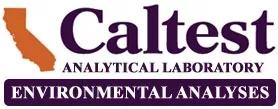Discussion of New Analytical Options for Wastewater, Stormwater, and Ambient Water Monitoring Programs
Potentially Reduce ‘False Positive’ data; Potentially reduce costs, In some cases reduce Reporting Limit
Discussion with clients and staff of Caltest Analytical Laboratory regarding new analytical options for providing monitoring program data needs. There have been advances in analytical instrumentation that have given us additional choices in how to provide analyses of waters.
Discussions included the technological advances we have explored, and the advantages they offer, and how each of these options fit with the regulatory criteria for various monitoring programs. Discussion both pros and cons, and hows and whys.
TOPICS:
What is now Available:
- Chlorinated Pesticides and PCBs by GC/MS EPA Method 625 meeting EPA Method 608 GC/ECD reporting limits with the superior confirmation of analyte identification by mass spectrometer. Virtually eliminate false positives. Meet current reporting criteria with approved method. Save costs.
Low level GC/MS
- Polynuclear Aromatic Hydrocarbons by GC/MS EPA Method 625 meeting EPA Method 610 HPLC low level reporting limits with the superior confirmation of analyte identification by mass spectrometer. How, why, and how has it worked so far.
What other low level GC/MS application is possible
- Organophosphorus Pesticides (Diazinon and Chlorpyrifos) by GC/MS EPA Method 625 meeting EPA Method 614 GC/NPD reporting limits with the confirmation of analyte identification by mass spectrometer. Some analytical and cost advantages, some regulatory limitations.
Performance Tested Our Findings
- Solid Phase Extraction with Liquid-Liquid Extraction equivalency of performance in wastewater using a commercial auto-extractor. How it worked, pros and cons, what we found, why we have not converted to this process at this time.
New Developments
- Methyl Mercury by automated system with lower reporting limits by draft Method 1630 modified (Florida Dept. of Environmental Protection Method). Where does a lower reporting limit for Methyl Mercury matter? What samples are appropriate or not? How could this affect data sets?
